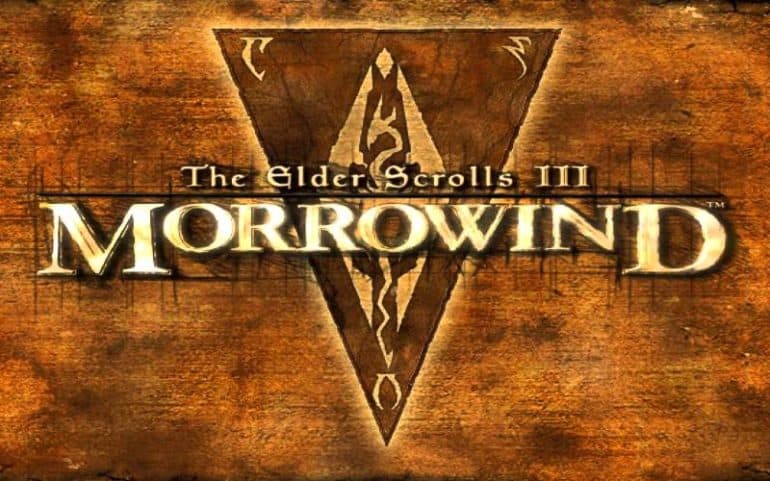Houses
In present day, the dwemer have long since disappeared and the dunmer rule over Morrowind in isolationism. House Telvanni, House Dres, House Hlaalu, House Redoran and House Indoril form the great council of Morrowind, they are the five great houses, functioning as rich powerful families that oversee political affairs and rule over different regions of territory. They are largely independent from one another and function as political parties that self govern their respective regions. The houses pertain to different ideologies, and are very distinguishable.
House Telvanni is the house of the master wizard, it is to an equal extent as obnoxious and egocentric as it is ambitious and talented in the arts and academics of magic. House Telvanni are very independent and often have little to no interaction with the other houses. Master wizards of House Telvanni are often highly narcissistic which either rewards them with great power or blinds them to the dangers of magic and punishes their wreckless curiosity.
House Dres is an agricultural house at first glance, ruling over the peaceful saltrice plantations across the mainland of Morrowind, however beneath the surface, House Dres operates several slave rings, and actively enslaves other races and ships them to Morrowind, to man the plantations, which allows House Dres to maintain its vast wealth and agricultural monopoly.
House Hlaalu are the merchant society and businessmen of Morrowind, and have vast trade networks across the world. Profit is their primary objective and they often create peace and aim for diplomacy. Unlike the other great houses, who are more reserved and do not like to mix with the cultures and other races of Tamriel (the continent that homes the 9 great provinces: Morrowind, Skyrim, Cyrodiil, Summerset Isles, Valenwood, Hammerfell, Black Marsh, Orsinium and High Rock), Hlaalu are more open to allies and business relationships with the other races and provinces, and are more friendly to outsiders, however the internal world of business within Morrowind is full of backstabbing, bribing, blackmailing and theft, undermining its pretty and desirable exterior reputation, however Hlaalu has many upstanding merchants.
House Redoran are the warrior house of Morrowind, they believe in the way of the warrior, and are fond of the art of swordplay and mettle, they do not respect magic or institutions that use magic like the Mages Guild and do not look favourably upon House Telvanni, they are also strong believers in the traditional customs of the Dark Elves.
House Indoril are the loyal supporters of the Tribunal, the religious authority in Morrowind, they often serve as militant ordinators protecting the tribunal temples from harm. They reject the principles of the empire and directly serve the wishes of the tribunal. The highest ranking member of House Indoril, Lord Indoril Nerevar, is also the patron saint of House Redoran, strengthening relationships between the houses.
Who has the power?
The real seat of power in Morrowind however is the Tribunal, the exceptionally powerful living gods who achieved godhood through the Psijic Endeavor. Vivec, Almalexia and Sotha Sil are revered as gods in the Dunmeri pantheon and are now considered the most powerful beings in Morrowind…
Nerevar Rising: The Story of Morrowind…
The Ghostfence, a mystical barrier created by the Tribunal surrounds the Red Mountain. Contained within the mountain’s Heart Chamber, mistakenly assumed to be dead, the immortal demigod Dagoth Ur resides, fueled directly by the unlimited power of the Heart of Lorkhan, growing increasingly stronger. The Sixth House has risen, and House Dagoth’s influence spreads across Vvardenfell alongside his blight. Disconnected from the Heart of Lorkhan, unable to enter the Red Mountain and bound struggling to maintain the Ghostfence, the power of the Tribunal is withering as Dagoth Ur’s power becomes increasingly unstoppable. Nerevar has been reincarnated in the form of the Nerevarine, to stop Dagoth Ur, who is attempting to create the Akulakhan, a Dwemer golem powerful enough to chanel the Heart of Lorkhan’s energy.
Despite Morrowind being more of a niche experience for a smaller community than its more recent successor Skyrim, Morrowind’s storytelling is a clear testament to the creative depth Bethesda Games Studios once flourished with, it is among some of the strongest storytelling in the franchise, surpassed only by its successor Oblivion’s more intricate quest narratives.
Dagoth Ur is one of the most memorable villains in the franchise, leaving his impact even after completing the game and through the later installments. Even in defeat, Dagoth Ur wins, achieving most of his intentions in a beautiful contradiction, redefining the concept of a video game antagonist.
Dagoth Ur’s motives were very unique which differentiated him from the typical main villain archetypes that were common in the RPG genre which had a large emphasis on light vs dark, and good vs evil. Dagoth Ur has the charisma and bombast of a well written villain and experiencing his narrative was one of the best moments in Elder Scrolls.
From Pen and Paper to Computer.
At no point does Morrowind try to hide it’s influences from table-top RPGs, and instead, rather takes pride in those influences and wears them on its sleeve. From character sheet to character creation, the RPG elements translated almost seamlessly, as if you were starting a campaign of Dungeons and Dragons, you could now immerse yourself into a living world with hundreds of hours of rich gameplay with your own character and do whatever you want.



